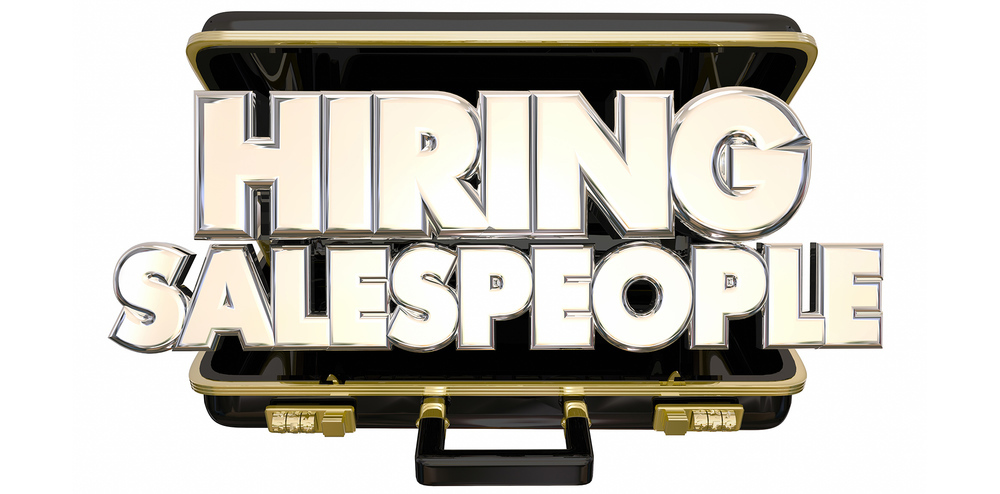Bias permeates the assessment process, but it’s even worse when it comes to interviewing salespeople since even the least best sales reps are great talkers.
Every sales manager wants to hire new sales reps who possess the four “A” attributes: Attractive, Affable, Assertive, and Articulate. Unfortunately, having these characteristics doesn’t mean the person is a competent sales rep, and not having them doesn’t mean the person is incompetent. Yet this doesn’t matter. The person will be assumed to be competent if he/she possesses them and incompetent if not.
During the interview, those who make a positive first impression are asked more softball questions with any negative answers being subconsciously ignored. Even if the candidate has a track record of superior sales, if the person misses two or more of the “A” traits on first glance, he/she will be asked more difficult questions, and positive information will be minimized or rationalized away.
Given the power of human emotions when it comes to this first impression bias, getting the truth requires some serious intervention. Here are a few ideas on how to reprogram yourself and overcome the tendency to assess job candidates on misleading and erroneous insight.
10 Ways to Overcome Interviewer Bias
1. Get a Better Measuring Stick
Rather than using personality traits and years of experience to assess competency, it’s better to first map out the process successful sales reps use to achieve their quarterly and annual goals. Then, during the interview, ask candidates to describe the process they use to achieve their results and compare it to this “standard of sales success” map. Do this a few times for different accounts and different products to ensure there’s a “sales process” fit. Also, make sure you get specific details about how the person’s overall performance compared to his/her peer group.
2. Use a Scripted Interview
Football coaches script the first 20 plays of every game. By using pre-scripted questions, you reduce the chance of going off-script due to the interviewer’s emotional reaction to the candidate.
3. Formalize the Debriefing Process
Interviewer bias will be instantly revealed by conducting live formal debriefing sessions a few hours after the interview. Use this Quality of Hire Talent Scorecard to capture everyone’s input. You’ll discover it’s hard to hide bias when emotional vs. actual evidence of sales performance is publicly shared and used to make the assessment.
4. Use Panel Interviews
As long as the interview is semi-scripted and the interviewers on the panel are assigned roles, it’s difficult for bias to overwhelm the process. Here are the basic guidelines.
5. Reprogram Yourself
People tend to relax when they meet a candidate they instantly like and get uptight when this instant reaction is negative. Make a note about this every time you meet a candidate. A pattern will soon emerge. Controlling your biases starts by recognizing you have them.
6. Do the Opposite of Your Typical First Impression Reaction
Most people seek out positive confirming facts for people they like and negative facts for people they don’t like. You can neutralize your biases by doing the opposite.
7. Measure First Impressions at the End of the Interview
At the end of the interview, it’s certainly appropriate to assess if the person’s first impression will help or hinder his/her sales performance. This step ensures you’re measuring first impressions objectively rather than being seduced by them.
8. Listen to the Judge
The judge’s instructions to the jurors are always the same: Hear all the evidence before reaching a conclusion. Every interviewer should take the same advice. Bottomline: Use the interview to collect the evidence to make the hiring decision; don’t make the decision during the interview.
9. Conduct a Phone Screen First
The less personal nature of a phone screen naturally reduces bias by eliminating visual clues and shifting the assessment to the person’s sales process and track record of sales performance. By establishing this initial connection with the candidate based on his or her past performance over the phone, the candidate’s actual first impression – strong or weak – is less impactful.
10. Wait 30 Minutes
During the interview, force yourself to wait at least 30 minutes before making any yes or no decision. During this time, collect the same information from each candidate, whether you like the person or not.
Unbiased Interviewing is Better
What’s surprising (or not), once you get to know people, few are as bad or as good as you first thought. Unfortunately, when you hire someone with inflated expectations, you’re bound to be disappointed. What’s worse is not hiring the best person you should have due to your bias blinders. In this case, you’ll never know what a huge mistake you’ve made.




